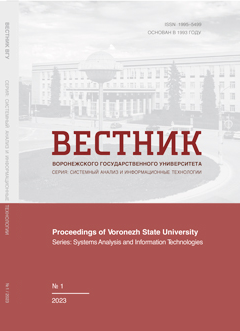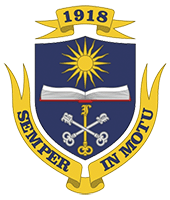Многоагентные системы: модели агентов и постановки задач, обеспечивающие их характерные свойства (часть 1)
Аннотация
Многоагентные системы относятся к технологиям искусственного интеллекта, а агент-ориентированный подход позиционируется как универсальное решение, которое способно конкурировать с другими технологиями в широком классе приложений. В данной статье рассматриваются традиционные и современные варианты формализации и интерпретации понятия агента в многоагентных системах, представлен обзор постановок задач, которые решаются при разработке таких систем для формирования признаков и свойств различных типов агентов.
Скачивания
Литература
2. FIPA Agent Management System. URL
3. Gorodetsky V. I., Bukhvalov O. L. and Skobelev P. O. (2017) Current state and prospects for industrial applications of multi-agent systems. Management of large systems. No 66. P. 94–157.
4. Leitao P. and Vrba P. (2011–2012) Recent Developments and Future Trends of Industrial Agents. Proc. of «Holonic and Multi-Agent Systems for Manufacturing» (HoloMAS-2011), Vol. 6867 of the series Lecture Notes in Computer Science. Springer Verlag. P. 15–28.
5. Műller J. and Fisher K. (2013) Application Impact of Multiagent Systems and Technologies: A Survey. In «Agent-Oriented Software Engineering» book series. Springer. P. 1–26.
6. Chernyshev S. A. (2023) Problems of multi-agent systems and possible solutions. Bulletin of the Russian New University. Series: Complex systems: models, analysis and control. No 3. P. 231–241.
7. Gladkov L. A. and Gladkova N. V. (2020) Evolving multi-agent systems and evolutionary design. Bulletin of SFedU. Technical sciences. No 4 (24). P. 48–59.
8. Kuznetsov A. V. (2018) Brief overview of multi-agent models. Management of large systems. No. 71. P. 6–44.
9. Massel L. V. and Galperov V. I. (2015) Development of multi-agent systems for distributed solution of energy problems using agent scenarios. Bulletin of Tomsk Polytechnic University. Engineering of Georesources. V. 326, No. 5. P. 45–53.
10. Zhmurko S. A. (2007) Multi-agent systems in CAD (part 2). Advanced information technologies and intelligent systems. No. 2. P. 8–16.
11. GOST R 59277-2020. National standard of the Russian Federation. Artificial intelligence systems. Classification of artificial intelligence systems (approved and put into effect by order of Rosstandart dated 23.12.2020 No. 1372-st). Moscow: Standartinform, 2021.
12. Tarasov V. B. (2002) From multi-agent systems to intelligent organizations. Moscow: Bukinist, 2002. 352 p.
13. Gorodetsky V. I., Granichin O. N. and Skobelev P. O. (2022) Decentralization, self-organization and emergent intelligence – the digital explosion of smart technologies. Proceedings of the general sessions of the 15th Multi-conference on management problems: Conference materials, St. Petersburg, October 4–6, 2022. St. Petersburg: “Concern “Central Research Institute “Elektropribor”. P. 40–54.
14. Tarasov V. B. (1998) Agents, multi-agent systems, virtual communities: strategic direction in computer science and artificial intelligence. News of artificial intelligence. No 2. P. 5–63.
15. Fominykh I. B., Romanchuk S. V. and Alekseev N. P. (2018) Goal-setting model in a multi-agent system with a limited time resource. Bulletin of the Moscow Power Engineering Institute. No 5. P. 73–78.
16. Levkina I. N. and Ledeneva T. M. (2020) General structure of a multi-agent decision support system. Eurasian Union of Scientists. No 5-5 (74). P. 43–46.
17. Kharin I. G. and Yanovsky A. V. (2014) Open multi-agent environment: concept and platform. Information technologies and computing systems. No 4. P. 12–24.
18. Tsarev D. V., Alodzhants A. P. and Avdyushina A. E. (2023) Opinion formation and social influence in networks with natural and artificial intelligent systems. Management of largescale systems development (MLSD’2023). Proc. Sixteenth int. conf. Moscow. P. 674–681.
19. Mitrakov A. A. Approaches to the construction of agent-based modeling systems. URL
20. Ivanov V. S. and Ryzhov A. P. (2014) Modeling of energy systems within the framework of a multi-agent approach. Intelligent systems. Theory and applications. V. 18, No 4. P. 37–44.
21. Belyaev S. A. (2020) Application of probabilistic and time automata in control programs of multi-agent systems. Science-intensive technologies in space research of the Earth. V. 12, No 3. P. 47–53.
22. Vladimirov A. V. (2014) Modeling the interaction of agents in a multi-agent system using colored Petri nets and fuzzy logic. Software products and systems. No 1. P. 44–50.
23. Breer V. V. and Rogatkin A. D. (2015) Probabilistic model of threshold behavior in multi-agent systems. Automation and Telemechanics. No 8. P. 56–77.
24. Granovetter M. and Amer. J. (1978) Threshold Models of Collective Behavior. Sociol. V. 83, No 6. P. 1420–1443.
25. Kuznetsov O. P. (2021) Asynchronous multi-agent multi-variety systems. Automation and Telemechanics. No 3. P. 132–148.
26. Ragovskiy A. P. (2011) Intelligent multi-agent system of deductive inference based on network organization. Artificial Intelligence and Decision Making. No 3. P. 73–85.
27. Dobrynin A. S., Koynov R. S. and Purgina M. V. (2019) Agent model for a multi-agent organizational system: economic aspect. Bulletin of Astrakhan State Technical University. Series: Economics. No. 4. P. 14–20.
28. Tour A. V. and Petrosyan A. V. (2023) Average tree solution in multi-agent systems with network structure. Mathematical game theory and its applications. V. 15, No 1. P. 73–89.
29. Fozilova M. M. (2019) Methods of using a multi-agent system to assess the state of a weakly normalizable system. Problems of Computational and Applied Mathematics. No 1 (19). P. 78–89.
30. Rovbo M. A. and Ovsyannikova E. E. (2019) Methods of local planning of agent behavior with BDI architecture. Artificial Intelligence and Decision Making. No 1. P. 74–86.
31. Andreychuk A. A. (2018) Algorithm for planning and a set of trajectories for a group of intelligent agents. Artificial Intelligence and Decision Making. No 4. P. 72–85.
32. Nazarova A. V. and Meixin C. (2017) Distributed problem solving in a multi-agent robotic system. Extreme Robotics. No 1 (28). P. 313–325.
33. Nikonov V. V. and Fakaly K. K. (2024) Multi-agent systems, agent interaction algorithms. Science Bulletin. V. 1, No 6 (75). P. 1500–1507.
34. Rybina G. V. and Parondzhanov S. S. (2008) Modeling of interaction processes of intelligent agents in multi-agent systems. Artificial intelligence and decision making. No 3. P. 3–15.
35. Revotyuk M. P. [et al.] (2020) Dynamic asymmetric assignment problem in open multi-agent systems. Reports of BSUIR. No 18(5). P. 53–61.
36. Luck M. [et al.] (2005) Agent Technology: Computing as Interaction (A Roadmap for Agent Based Computing). AgentLink. URL
37. Kirikov I. A., Kolesnikov A. V. and Listopad S. V. (2009) Modeling self-organization of groups of intelligent agents depending on the degree of coordination of their interaction. Computer science and its applications. V. 3, No 4. P. 76–86.
38. Chebotarev P. Yu. and Agaev R. P. (2009) Matching characteristics in multi-agent systems and spectra of Laplace matrices of oriented graphs. Automation and Telemechanics. No 3. P. 136–151.
39. Kulinich A. A. (2016) Model of teamwork of agents with BDI architecture. XV National Conference on Artificial Intelligence with International Participation: Conference Proceedings: in 3 volumes, Smolensk, October 3–7, 2016 / Russian Association of Artificial Intelligence. Volume 2. Smolensk : Universum. P. 345–353.
40. Gorodetsky V.I. [et al.] (2009) Applied multi-agent systems of group control. Artificial intelligence and decision making. No 2. P. 3–24.
41. Agaev R. P. and Chebotarev P. Yu. (2010) Convergence and stability in problems of matching characteristics (review of basic results). Management of large systems. V. 30, No 1. P. 470–505.
42. DeGroot M. H. and Amer J. (1974) Reaching a consensus. Statist. Assoc. Vol. 69, No 345. P. 118–121.
43. Agaev R. P. and Chebotarev P. Yu. (2017) Models of latent consensus. Automation and telemechanics. No 1. P. 106–120.
44. Listopad S. V. (2024) Development of negotiation tactics by artificial intelligent reflexive agents. Systems and means of information technology. V. 34, No 1. P. 92–101.
45. Mutovkina N. Yu. [et al.] (2013) Fuzzy methods of coordinated control in multi-agent systems. Bulletin of Tambov State Technical University. Vol. 19, No 4. P. 740–750.
46. Listopad S. V., Kirikov I. A. (2022) Conflict resolution in hybrid intelligent multi-agent systems. Computer Science and its Applications. V.16, No 1. P. 54–60.
47. Listopad S. V. and Kirikov I. A. (2020) Method for identifying agent conflicts in hybrid intelligent multi-agent systems. Systems and means of informatics. Vol.30, No 1. P. 56–65.
48. Rumovskaya S. B. and Kirikov I. A. (2022) Method of visualization of reducing intensity and resolving conflicts in hybrid intelligent systems. Computer Science and its Applications. V. 16, No 2. P. 94–101.
49. Rumovskaya S. B. and Kirikov I. A. (2023) Visual language of representation of the conflict management process in hybrid intelligent multi-agent systems. Systems and means of information science. Vol. 33, No 2. P. 60–70.
50. Listopad S. V. and Kirikov I. A. (2023) Method based on fuzzy rules for managing agent conflicts in hybrid intelligent multi-agent systems. Computer Science and its Applications. V. 17, No 1. P. 66–72.
51. Kolesnikov A. V. and Listopad S. V. (2019) Heterogeneous thinking protocol of a hybrid intelligent multi-agent system for solving the problem of restoring a distribution power grid. Informatics and its applications. V. 13, No 2. P. 76–82.
52. Kolesnikov A.V. [et al.] (2018) Analysis of heterogeneous thinking methods and prospects for their implementation by hybrid intelligent multi-agent systems. Bulletin of the Immanuel Kant Baltic Federal University. Series: Physical, Mathematical and Technical Sciences. No 2. P. 59–71.
53. Listopad S. V. and Kirikov I. A. (2022) Architectures of intelligent agents of cohesive hybrid intelligent multi-agent systems. Systems and means of informatics. V. 32, No 2. P. 81–91.
54. Gladkov L. A. and Gladkova N. V. (2019) Evolutionary design as a tool for developing multi-agent systems. Bulletin of SFedU. Technical sciences. No 4 (206). P. 26–36.
55. Yemelyanov V. V., Kureichik V. V. and Kureichik V. M. (2003) Theory and practice of evolutionary modeling. Moscow : Fizmatlit. 432 p.
56. Gladkov L. A. and Gladkova N. V. (2021) Evolutionary design of multi-agent systems. Bulletin of SFedU. Technical sciences. No 4 (221). P. 51–61.
57. Gladkov L. A. [et al.] (2009) Bioinspired methods in optimization. Moscow : Fizmatlit. 382 p.
58. Lebedev O. B., Lebedev B. K. and Vanidovsky V. A. (2017) Construction of a hybrid bio-inspired multi-agent system using the example of a partitioning problem. Software products, systems and algorithms. No 4. P. 7.
59. Dubenko Yu. V., Dyshkant E. E. and Obozovsky A. A. (2023) Method of synthesis of the organizational structure of centralized multi-agent systems with the possibility of its automatic adaptation in case of changes in environmental parameters or the task. News of higher educational institutions. Volga region. Technical sciences. No 3 (67). P. 18–30.
60. Dubenko Yu. V. and Rudeshko N. A. (2022) Reinforcement learning algorithm for decentralized multi-agent systems based on the exchange of experience and training agents in random interaction. Vestn. Voronezh state tech. University. V. 18, No 4. P. 30–36.
61. Zarubin D. A. (2009) On the problem of synthetic emotions in artificial communities. Humanitarian. No 8. P. 224–226.
- Авторы сохраняют за собой авторские права и предоставляют журналу право первой публикации работы, которая по истечении 6 месяцев после публикации автоматически лицензируется на условиях Creative Commons Attribution License , которая позволяет другим распространять данную работу с обязательным сохранением ссылок на авторов оригинальной работы и оригинальную публикацию в этом журнале.
- Авторы имеют право размещать их работу в сети Интернет (например в институтском хранилище или персональном сайте) до и во время процесса рассмотрения ее данным журналом, так как это может привести к продуктивному обсуждению и большему количеству ссылок на данную работу (См. The Effect of Open Access).



















